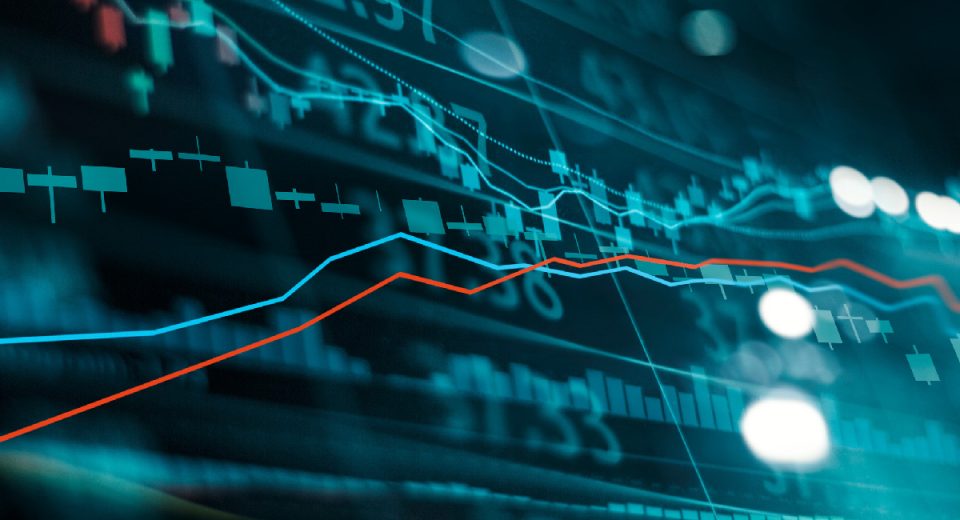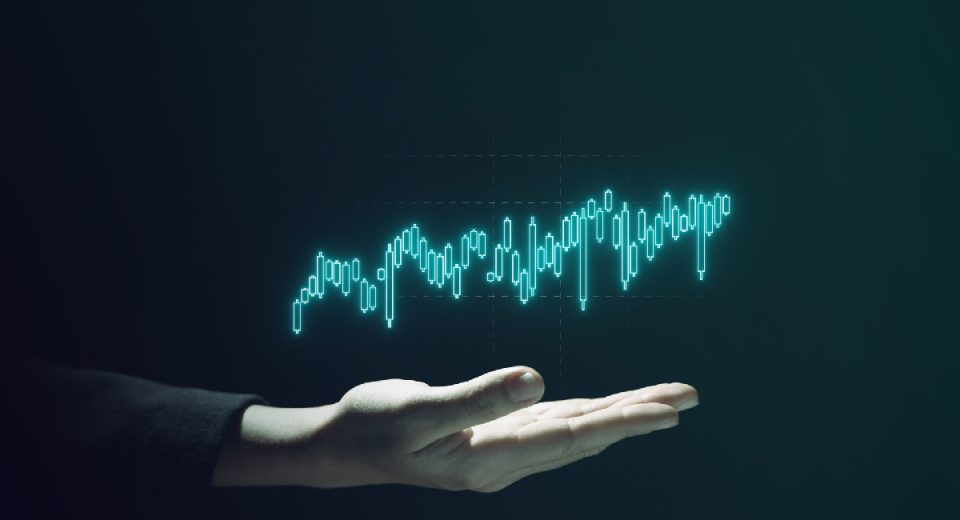Demystifying Technical Analysis Jargon for Traders

Technical analysis uses historical price movements to predict how markets may move in the future. Many traders prefer technical analysis, as it cuts out all the noise and focuses only on the price changes of an asset. However, if you’re new to technical analysis, the barrage of specific terms can be overwhelming. Here are some of the most common technical analysis terms and jargon all traders need to know.
Candlestick Charts
The most important tool used in technical analysis is price charts. The main chart types are the line chart, bar chart, and candlestick chart. Traders prefer the candlestick chart because it packs in a lot of market information in an easy graphical representation.
Image Source: Investopedia
The body of a candlestick shows the price range between the open and close prices of that day’s trading. If the body is red (or black), it means the close was lower than the open. If the real body is green (or white), it means the close was higher than the open. The wicks (or shadows) show the high and low prices of that day’s trading.
Remember:
- The longer the body of a green candle, the stronger the bullish sentiment in the market. Similarly, a long red candle indicates bearishness.
- A tall upper shadow indicates resistance, while a long lower shadow signals support.
Chart Patterns
Traders use price charts, like candlestick charts, to predict future movements. This is possible only by recognising chart patterns. The price of an asset, like oil, a currency pair, or a precious metal, may change every second. However, when seen over a period of time, these price movements may create distinctive formations. These formations are called chart patterns.
Trend and Reversal
A trend is the general direction of the price of an asset over a period of time. If prices are generally rising, it is called an uptrend. If prices are moving downward, it’s called a downtrend.
A reversal is a change in the direction of the price of an asset. After an uptrend, if prices begin declining, it is known as a downside reversal. After a downtrend, when prices begin to rise, it’s called a reversal to the upside. It’s important to note here that reversals are said to occur when the general direction of price changes and not just a change in one or two candlesticks or bars.
Chart patterns are used to identify trends and reversals. That’s the reason chart patterns are broadly categorised as continuation patterns and reversal patterns.
The most common continuation chart patterns are:
- Rectangle patterns
- Triangle patterns
- Pennant patterns
- Wedge patterns
- Cup and handle
The most common reversal patterns are:
- Wedge patterns
- Head and shoulders
- Double top and bottom
- Triple top and bottom
- Sushi roll
Indicators
Technical indicators are mathematical calculations that incorporate the price, volume and other parameters of an asset. These are pattern-oriented measures that are plotted on price charts and act as signals for traders. The good news, especially for new traders, is that they do not need to have any knowledge of analysing statistical trends from trading activity. There are several technical indicators that you can simply drag and drop on your price chart.
Broadly speaking, there are two types of technical indicators.
- Overlays: These technical indicators are overlaid on the price chart (appear on top of the price chart) and use the same scale as the prices of the asset. The most common among these are moving averages and Bollinger Bands™.
- Oscillators: These are technical indicators whose values swing (oscillate) between high and low points. They are typically plotted below the price chart of the asset being analysed. The most common among these are the stochastic oscillator, moving average convergence or divergence (MACD), or relative strength index (RSI).
Technical indicators can also be classified as:
- Trend indicators: These measure the direction and strength of a trend. The common ones are moving averages, MACD, and parabolic stop and reverse (Parabolic SAR)
- Momentum indicators: These indicate the speed of price movements. The stochastic oscillator and RSI are popular momentum indicators.
- Volatility indicators: They measure the rate of price movement. Bollinger Bands™ and standard deviation are two common volatility indicators.
- Volume indicators: These measure the strength of a trend based on the volume of the asset being traded. The common ones are the Chaikin oscillator and on-balance volume (OBV).
Entry and Exit Points
The very purpose of trading is to buy and sell assets at the right time to maximise gains. Technical analysis helps identify the price at which a trader should open a position and the price at which the position should be closed. These are known as entry and exit points, respectively.
Stop Loss and Take Profit Orders
Despite several tools to predict price movements, markets can unexpectedly move in the opposite direction. This makes risk management critical for all traders. Stop loss and take profit orders are key risk management tools used on price charts.
A stop-loss order is used to limit losses. It is an instrument to close a position when the asset being traded reaches a certain price. For instance, you may decide to go long on gold as you expect prices to rise. You could place a stop-loss order 5% below your purchase price. This means if gold prices decline by 5%, your position will be closed. This prevents you from incurring high losses in case the market suddenly turns against you.
A take-profit order is used to lock in profits. It is an instrument to close a position when the asset being traded reaches a certain price. For instance, when you open a long position in gold, you may place a take-profit order that is 10% above your purchase price. This means if gold prices rise by 10%, your position will be automatically closed. This ensures you book a profit when your analysis is correct, instead of holding it till the market suddenly reverses and completely erodes your win.
Technical analysis is particularly useful for short-term traders. It plays a critical role in recognising patterns on price charts and using indicators to identify trends and reversals, entry and exit points as well as stop loss and take profit.
Disclaimer:
All data, information and materials are published and provided “as is” solely for informational purposes only, and is not intended nor should be considered, in any way, as investment advice, recommendations, and/or suggestions for performing any actions with financial instruments. The information and opinions presented do not take into account any particular individual’s investment objectives, financial situation or needs, and hence does not constitute as an advice or a recommendation with respect to any investment product. All investors should seek advice from certified financial advisors based on their unique situation before making any investment decisions in accordance to their personal risk appetite. Blackwell Global endeavours to ensure that the information provided is complete and correct, but make no representation as to the actuality, accuracy or completeness of the information. Information, data and opinions may change without notice and Blackwell Global is not obliged to update on the changes. The opinions and views expressed are solely those of the authors and analysts and do not necessarily represent that of Blackwell Global or its management, shareholders, and affiliates. Any projections or views of the market provided may not prove to be accurate. Past performance is not necessarily an indicative of future performance. Blackwell Global assumes no liability for any loss arising directly or indirectly from use of or reliance on such information here in contained. Reproduction of this information, in whole or in part, is not permitted.




